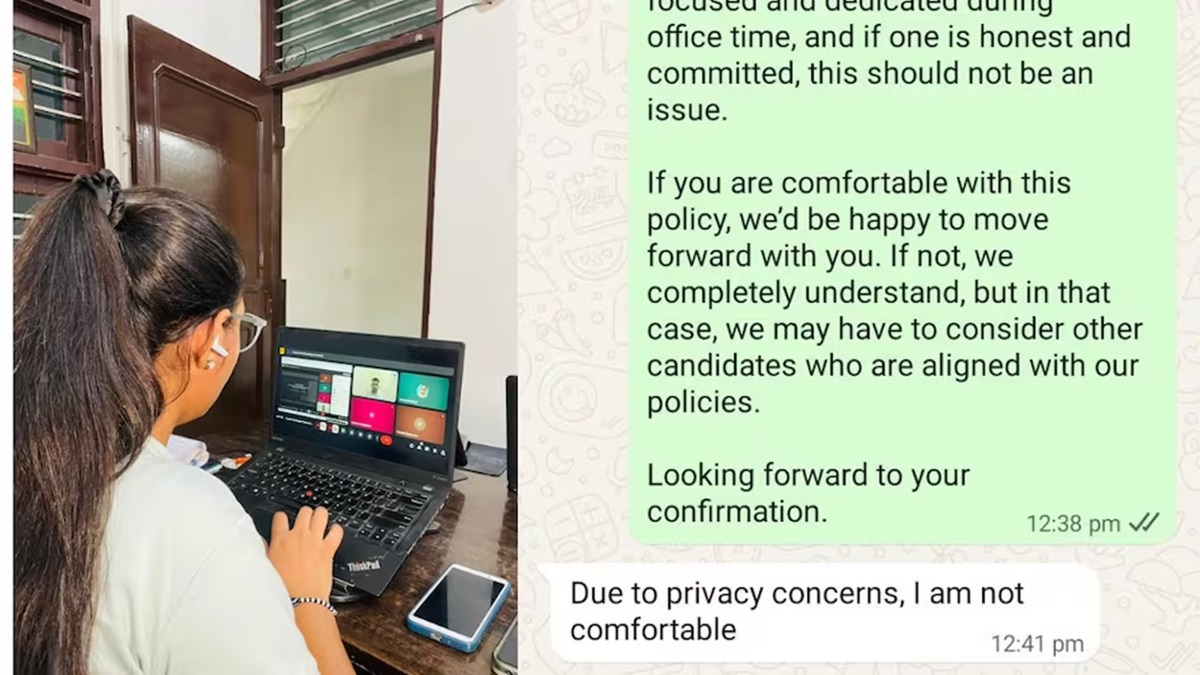For decades, workplace stress was viewed primarily as an individual concern to be managed by HR—often through wellness programs or stress management workshops—rather than as a systemic, business-critical risk that warrants executive oversight. The consequences of this outdated perspective persist today—not due to a lack of awareness, but because workplace stress is often still treated as peripheral to business strategy rather than as integral to it.
In a Deloitte survey, 94% of C-suite executives agreed on the importance of being health-savvy leaders. However, 68% admitted they aren’t taking sufficient action to safeguard employee and stakeholder health. This indicates a significant gap between acknowledgment and implementation. Meanwhile, data from Aflac shows that although 54% of employees in 2024 felt their employer cared about their mental health (up from 48% in 2023), 38% reported high stress at work (a rise from 33% in 2023) suggesting that current investments are missing the mark on addressing stress-specific needs.
Why aren’t these investments working? We argue that one of the root causes of rising stress levels—despite investment—is companies’ limited ability to measure and quantify the problem. Just as companies rigorously measure financial, operational, and reputational risks, we suggest that they must also measure and manage stress as a business risk.
We introduce the Stress Risk Thermometer—a new framework to help organizations assess and track stress-driven business risk—and offer actionable strategies for building resilience through structured measurement, cross-functional accountability, and targeted interventions.
What Stress Costs Organizations
In our recent study of 1,005 full-time professionals across high-intensity industries in the U.S. and UK, we found that high levels of stress translate into an added $5.3 million annually in costs for every 1,000 employees at a company. Our analysis also found that the cost of stress for employers can be seen across three areas: cost control, risk mitigation, and sustained performance.
Cost Control
Our data shows that employees experiencing high stress file 2.5 times more health claims than their low-stress counterparts, creating a direct financial burden for businesses that self-insure. Rising health insurance costs, identified in Mercer’s People Risk Report 2024 as the number one business risk globally, are accelerating the urgency to address the cost risk. From 2020 to 2024, per-employee premium costs in the U.S. have surged by 28%, with annual increases averaging 6.5%.
Risk Mitigation
Additionally, 12% of employees in our study admitted to making mistakes, missing deadlines, or cutting corners in ways that could jeopardize regulatory compliance—and employees under high stress are 11 times more likely to do so. The financial penalties for non-compliance can be devastating, and we believe that what might be even harder to recover is the loss of stakeholder trust and reputational damage that stress-driven failures can create.
Sustained Performance
Our data shows that chronic stress drains workforce productivity. Highly stressed employees take 8 times more sick days and disengage at 4 times the rate of their low-stress peers. The combined cost of absenteeism, presenteeism (working while unproductive), and turnover results in an average of $12,000 in productivity loss per highly stressed employee, per year—a silent but substantial drag on profitability.
Stress-related turnover accounts for the largest share of cost—approximately $3.5 million annually—based on the assumption that one-third of employees who intend to leave will do so within a year, with turnover costs estimated conservatively at 100% of salary. Presenteeism costs employers around $1 million annually, using Gallup’s benchmark that disengagement-related productivity loss equates to 18% of salary. Lastly, stress-related absenteeism costs an estimated $778,000 per year, driven by the six additional sick days taken annually by high-stress employees, calculated over a 260-day work year.
A Tool for Quantifying and Mitigating Stress-Induced Risks
The first and arguably most important step in managing stress risk is an accurate measurement of stress within your own organization. Many leaders tell us that they view stress as too subjective or personal to quantify. Traditional tools like engagement surveys and pulse checks typically capture only snapshots of sentiment and rarely connect stress to the business outcomes that executives care about most like productivity, cost control, and risk exposure.
Our Stress Risk Thermometer provides a different approach. Produced as a method of analysis for our research study, it delivers a structured, tiered assessment of employee stress which enables leaders to calibrate their interventions—prompting targeted strategies when a significant portion of the workforce falls into high-stress zones linked to measurable risks.
How to Get Started
Companies can begin assessing stress risk internally by asking a simple question like, “How often do you feel stressed, anxious, or overwhelmed at work?” once every 6-12 months. Employees can be prompted to select between “none of the time,” “rarely,” “sometimes,” “frequently,” or “all of the time.” These data allow leaders to segment their workforce into low, medium, and high-stress zones, and should be held to high privacy standards which we will discuss in greater detail below.
- Low zone: Employees are experiencing low stress and risks are low. They report feeling stressed “rarely” or “none of the time.” They operate in a sustainable performance state with minimal operational vulnerability. Our research shows they take fewer sick days, submit fewer health claims, and report collaborating more effectively. Organizations with higher concentrations of employees in this zone tend to see more focused, resilient, and engaged teams. In our research, this group made up 14% of employees who were surveyed. (While these numbers may differ in your company, we offer this number as an initial benchmark to see how your workforce stress breakdown compares to our sample.)
- Medium zone: Stress is elevated at times but not critical, risks are elevated but can be managed. Employees in this group report feeling stressed “sometimes.” While often appearing productive, persistent moderate stress—without adequate recovery—can erode focus, creativity, and teamwork. Over time, this zone is likely to become a source of hidden performance risk, marked by an increased risk of disengagement, strained relationships, and health-related challenges. Our data suggests this group makes up about 41% of the workforce.
- High zone: Stress is continual or severe enough to affect employees chronically, making risks likely. Employees report feeling stressed “frequently” or “all the time.” This group represents a crisis zone with compounding costs and operational vulnerabilities. Compared to low-stress peers, these employees take 8 times more sick days, are 3.7 times more likely to consider leaving, 4 times more likely to be disengaged, 11 times more likely to make compliance-related mistakes, 2.5 times more likely to file health claims, and 7 times more likely to report interpersonal conflict with their colleagues. Our data suggests that this group makes up about 45% of the workforce.
After seeing where their workforce falls, companies can analyze how these stress zones correlate with operational data that they already track, including revenue, compliance failures, and client satisfaction. This involves comparing patterns to see whether particular departments experience higher stress and also have more errors or declining customer feedback compared to less stressed departments or teams. The goal is to identify whether elevated stress is concentrated in areas tied to critical business outcomes, and whether this elevated stress is associated with increased risk or reduced performance.
Finally, to act on these insights, companies can pinpoint the underlying factors that predict stress. These factors can be assessed by asking employees questions such as: “To what extent do your workload and deadlines feel manageable?” or “Do you feel psychologically safe raising concerns or asking for help?” These additional insights can help organizations design targeted, structural interventions that address the critical predictors of this stress-related risk.
For example: One multinational client that we worked with used the Stress Risk Thermometer framework to gauge how different levels of stress related to resilience across the organization, broken down by department and region. After conducting an initial stress survey, they ran a follow-up survey asking questions such as “How confident are you in your ability to manage stress effectively?” to assess levels of stress resilience.
Analyzing resilience reveals how well employees can recover and sustain performance under stress—providing a forward-looking measure of risk and readiness, especially in leadership roles. The company found that managers were experiencing higher levels of perceived stress than others, but also reported higher resilience—highlighting the importance of equipping future leaders with stress resilience skills.
The survey also revealed company-wide risk areas like prolonged sedentariness, reduced perceived productivity, and a lack of confidence over ability to cope with stress. These insights were shared in leadership team meetings and resulted in strategic interventions including scheduled movement breaks and a healthy habits campaign. These initiatives saw significantly higher engagement than previous well-being efforts, with 54% of interventions delivering in-the-moment stress reduction.
Based on these insights, we co-designed a habit formation program tailored to fit the needs of each region and department. To encourage regular participation, we created a central leaderboard that celebrated every time someone chose to show up and engage in these stress-lowering programs.
Formalize Stress in Risk Management
To be effective, managing stress as a material liability requires shared ownership. Integrating stress into formal risk management frameworks ensures regular assessment, reporting, and discussion at the leadership and board levels. In our work, the most effective organizations bring together leadership across HR, finance, and risk management teams to co-own stress-risk mitigation—breaking down traditional silos to protect, equip, and motivate their workforce.
When HR’s understanding of employees is combined with analytical rigor, organizations can build sophisticated approaches that track absenteeism trends, performance fluctuations, and other early warning signs of disengagement. Formalizing this collaboration ensures that stress is reviewed alongside financial and operational risks at the leadership level.
For example, one global commercial law firm integrated mental health and stress into its broader risk management framework, aligning with recommendations from the ISO 45003, the global standard for workplace mental health and burnout management, to address psychosocial risk from poor mental health. They developed both leading and lagging indicators—drawing on insurer and broker data—and linked these to cost and performance metrics. This allowed them to demonstrate the ROI of their current well-being interventions. This approach enabled more targeted, evidence-based actions, reinforced psychological safety, and built a strong, cross-functional case for sustained investment in mental health.
A note on privacy: We believe that stress data should always be collected anonymously and reported in aggregate, for example, at the team or department level, rather than at the individual level. Any measurement efforts should be transparent, with employees clearly informed about what’s being measured, how the data will be used, and how it will benefit them.
Most importantly, we believe that this work must focus on system-level change, not individual blame. The purpose of a tool like the Stress Risk Thermometer is not to monitor employees, but to provide leaders with visibility into where structural changes are needed, so the root causes of stress can be addressed in ways that have the potential to improve both health and performance.
. . .
Organizations can no longer afford to react to events as they unfold. Instead, they must build and embed resilience as a long-term capacity—through individual support and organizational design.
Resilience isn’t a program—it is a system embedded into how organizations lead, operate, and grow. Building it requires a shared commitment: employees need support to build sustainable health habits, while organizations must take responsibility for shaping environments that reduce stress and build psychological safety.
We believe that organizations must regularly use data on work stress to reassess policies, practices, and cultural norms, if they want to prevent employee stress from becoming a chronic and costly concern. By embedding resilience into the fabric of the organization, we believe that leaders can reduce the likelihood of disruption, protect workforce health, and unlock a long-term competitive advantage.
Source – https://hbr.org/2025/06/employee-stress-is-a-business-risk-not-an-hr-problem




















